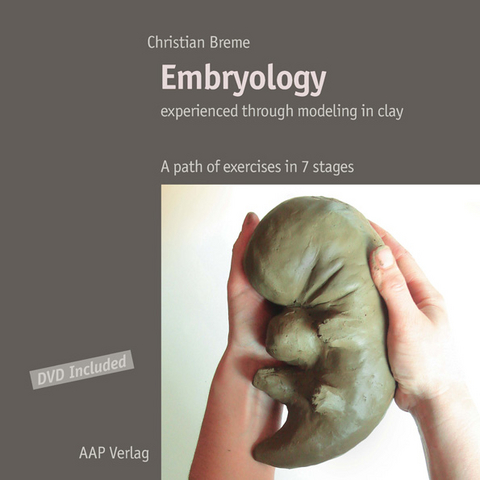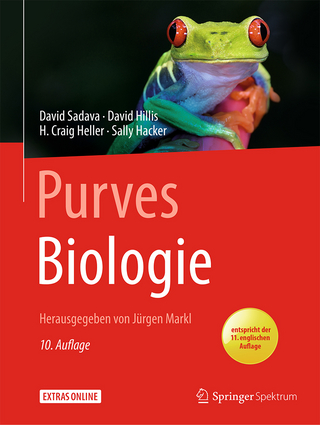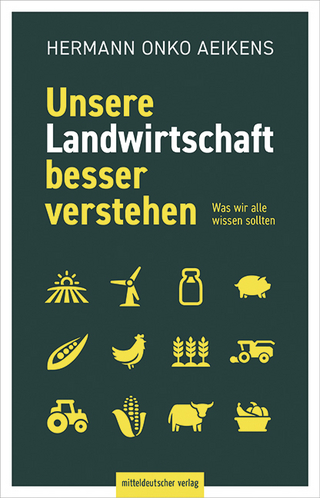
Embryology
AAP Verlag
978-3-905868-19-7 (ISBN)
- Titel ist leider vergriffen;
keine Neuauflage - Artikel merken
Index
Stage One Cleavage 10
Stage Two Implantation 15
Stage Three The Great Metamorphosis 21
Stage Four The Extremities and the Inner Ear 30
Stage Five The Embryology of the Eye 36
Stage Six The Development of the Heart 42
Stage Seven The Formation of the Head 48
Appendix 50
Preface While scientific research in embryo selection, gene therapy, therapeutic and reproductive cloning has produced social benefits, it has also posed some troubling ethical questions. These growing ethical concerns pose challenges for teachers. The capacity to enter directly into the development of the human fertilized egg has raised questions that many people feel not yet ready to answer with insight and appropriate moral judgment. This is a concern for all humanity and for each one as an individual. It concerns most of all teachers, who hope to provide the basis for sound judgment in young people as they are developing an inner attitude towards all things. The discrepancy between the possibilities of modern medicine and its ethical accountability has early roots. This is based in the concept of a science that judges aesthetic and moral considerations as subjective and excludes them from the process of investigation that demands a critical distance from the object of investigation. Life itself in the form of the human fertilized egg has become an object of this kind of research. Nowhere in current scientific literature do we find references such as the “beauty of the face of the human embryo” (E. Blechschmidt), or “the artful handling of nature in its metamorphosis” (A. Suchantke), or “the wise achievements” in its processes (H. Kückelhaus); such descriptions are no longer used where the “raw material of the living” is subordinate to massive economic interests. Rudolf Steiner gave answers to this onesided tendency of human conceptualization in the form of the Waldorf School curriculum and pedagogical methods. In school, young people should experience thinking that acknowledges the world phenomena and at the same time becomes “a wellspring of morality.”1 Waldorf schools should help to overcome the growing division between thinking, feeling and willing. The artistic eye needs to be trained in the natural sciences; the working of metamorphosis that Goethe discovered studying plants should be studied and developed in free forms in art education. This represents a challenge for interdisciplinary collaboration. This research project on embryology grew out of such a collaboration. At the source was a particular biologist’s encouragement to a sculptor to immerse himself into embryology and to participate in the teaching of the subject in the 11th grade. Instead of analytical drawings of processes, there was a possibility of sequencing the major steps in the development of the germ in all its transitions, invaginations and outgrowth processes through modeling. Through this, one could work with awakened senses and aesthetic sensibility. It was often visible how astonished and touched the young people were in working in this way. The active immersion into the world of the forming forces was remembered vividly by many students even after many years had elapsed. Within work of this kind there lies a possibility for a foundation of healthy decision making which is demanded in our time. Therefore, this work is brought forward to encourage others to create projects in which artists, eurythmists, biologists, and school physicians collaborate. The form of a newborn human being is the outcome of the development of a fertilized egg that is carried out in the warmth and darkness of the mother’s organism. We need to picture a form of indescribable delicateness that moves harmoniously in its watery environment, while it metamorphoses and differentiates within this constant movement. It is a wonderful sculptural happening that can call to mind choreography to some inaudible music. During the first week after impregnation the development starts with a spherical form which differentiates gradually. It is as if a simple tonal scale were struck. The development already changes into a polyphonic phase during the second week, after the embedding of the egg, with the forming of manifold inner spaces (cavitations), projections and invaginations. During the third and fourth week it changes into a grandiose symphony of plastic processes in which we cannot separate anymore the different voices in their simultaneousness and their relationships. This continues in complexity until the final chord, the birth. We can distinguish three phases in teaching embryology in a sculptural way: The first phase, the process from impregnation to implantation of the egg, the time of furrowing, (cleavage), can be followed sculpturally with a few simple manipulations. The second phase, the gastrulation, (forming of germ layers, establishment of body plan) calls for the students to immerse themselves experientially and sculpturally, as it demands a very active inner imagination and great skill. The third phase deals with some single voices from the choir of forces such as the study of the development of single organs or organ systems through which it is possible to understand interconnections and harmonics with other organs or systems. This sculptural approach to the study of embryology could be embedded in a more theoretical
| Sprache | englisch |
|---|---|
| Maße | 210 x 210 mm |
| Gewicht | 228 g |
| Einbandart | Paperback |
| Themenwelt | Naturwissenschaften ► Biologie |
| Weitere Fachgebiete ► Anthroposophie | |
| Schlagworte | Embriologie • Embryologie • Plastische Kunst |
| ISBN-10 | 3-905868-19-9 / 3905868199 |
| ISBN-13 | 978-3-905868-19-7 / 9783905868197 |
| Zustand | Neuware |
| Haben Sie eine Frage zum Produkt? |
aus dem Bereich


